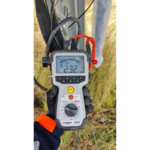The Generator Performance Standards (GPS) are important for renewable energy assets in the National Electricity Market (NEM). The Australian Energy Market Operator (AEMO) sets these guidelines to govern grid connection and operational performance for generators such as solar farms and battery systems. They define site management technicalities that generators should meet, such as voltage control, frequency response, and system strength.
These standards also ensure a safe, reliable, and stable grid as the country transitions toward decentralised and renewable power generation. Failure to meet AEMO’s requirements can cause major commercial setbacks, including delayed commissioning, added costs, and project risk.
Overview of the AEMO GPS Framework
The Generator Performance Standards (GPS) involve a detailed assessment of how a proposed generator potentially behaves in various network conditions. They ensure that each asset contributes to grid stability and avoids risks such as voltage oscillations and frequency deviations.
In renewable energy engineering, the AEMO GPS Application requires benchmarking using simulation tools like PSSE and PSCAD. Site-specific data, including electrical schematics, control system logic, and protection settings, support these models. Success relies on the alignment across design, simulation, and validation — particularly for hybrid projects combining solar PV and BESS.
Common Pitfalls in GPS Applications
Despite careful planning, many renewable energy infrastructure projects fail during the application or post-submission stages. Here are the three most common reasons why GPS submissions fail or are delayed:
Incomplete or Inaccurate Site Data
One of the most common reasons the Australian Energy Market Operator (AEMO) rejects applications is that applicants submit incomplete or inaccurate documentation. Site management teams often miss updated schematics, configurations, or layouts, especially with multiple subcontractors involved. These omissions hinder accurate simulation models in tools like PSCAD or PSSE, which lead to delays in validation.
Poor Coordination Among Stakeholders
Coordination is an important factor in every successful project site management. Misalignment can delay performance testing or validation, leading to setbacks that may extend project timelines by several weeks. For this reason, renewable engineers, equipment manufacturers, civil contractors, and network operators should work together.
Lack of BESS-Specific Modelling
Although integrating solar farm design is now standardised, many projects still underestimate the complexity of battery energy storage system (BESS). Unlike photovoltaic (PV) systems, integrating this system requires additional modelling of charging/discharging behaviour, grid-forming capabilities, and harmonic interactions. As such, developers should treat this as a primary generation asset and invest in early-stage dynamic studies.
Weak Submissions and Multiple TDD Rounds
A strong GPS submission usually requires two rounds of Technical Due Diligence (TDD). These are done by the Australian Energy Market Operator (AEMO) and the Transmission Network Service Provider (TNSP):
- Round 1: The proponent submits the application. Then, the AEMO and the TNSP will review and provide an issue tracker with comments.
- Round 2: The consultant addresses these comments and resubmits, after which the project can progress to the Full Impact Assessment (FIA) stage and then to the Connection Agreement (CA).
However, a weak submission may take up to five rounds, with each review costing thousands of dollars in consultant time and delays. This increases both costs and risks in missing project milestones and financing deadlines.
Approaches for a Smoother GPS Process
To ensure a smoother AEMO GPS approval process, developers should take a proactive approach in addressing technical requirements early. Here are three strategies that can significantly reduce application pitfalls and enhance project efficiency:
Conduct a Pre-lodgement Consultation
It is highly recommended to hold pre-lodgement meetings at least two months before formal lodgement. These meetings involve discussion of preliminary models, technical assumptions, and expected outcomes. It also allows site management teams to align their expectations with AEMO’s requirements and identify technical gaps early.
Establish a Technical Checklist for GPS Compliance
A structured checklist ensures no information is missed during documentation, especially when managing solar and BESS assets. This list includes inverter test reports, protection scheme settings, reactive power control strategies, and site-specific assessments.
Get Simulation from Site Experts
Technical modelling is more often treated as a back-end task. Early involvement of a certified modeller and on-site engineers allows for alignment between equipment behaviour and simulated responses. This also reduces rework and improves accuracy in site management.
Streamline AEMO GPS Applications with ElectraGlobe
Accurate modelling, real-time coordination, and robust site data are important for successful GPS submissions. Site management teams that plan ahead, communicate across disciplines, and apply proven engineering practices can significantly reduce delays and risk.
ElectraGlobe assists developers in navigating the GPS process with discipline, insight, and technical expertise. From early-stage modelling to coordination with AEMO and NSPs, we help projects move efficiently from design to commissioning.
Frequently Asked Questions (FAQs)
Here are answers to commonly asked questions about the AEMO and its key technicalities in connecting renewable energy assets:
What is AEMO?
The Australian Energy Market Operator (AEMO) operates and plans safe, sustainable, and economically efficient energy systems. It acts as an independent market and system operator, ensuring compliance with technical standards, managing grid reliability, and guiding energy transition initiatives.
What is the AEMO capability assessment?
AEMO’s capability assessment evaluates a new generator or battery system’s ability to meet the GPS framework. This includes technical modelling, fault ride-through capability, voltage and frequency control, and system strength impact assessments to ensure grid stability and compliance.
What is the difference between GPS and R0/R1/R2 compliance?
The Generator Performance Standards, or GPS, refers to the agreed technical performance standards for a generator. Meanwhile, the R0/R1/R2 compliance refers to the staged grid connection process where GPS is proposed (R0/R1), validated, and confirmed during commissioning (R2)







